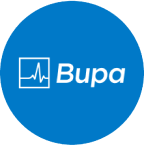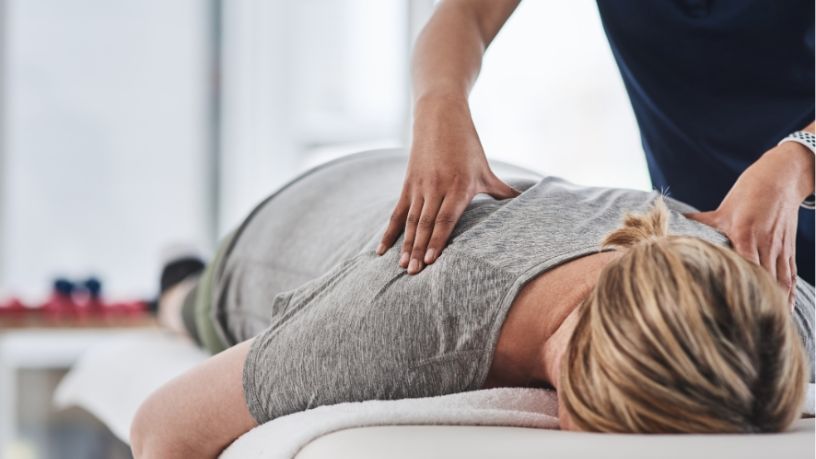A rotator cuff injury is a common cause of shoulder pain, especially in older and active people.
On this page
Key takeaways
There are different causes, symptoms and types of rotator cuff injuries.
Find out about the non-surgical and surgical treatment options.
Osteoporosis is a condition that occurs when bone breaks down faster than it can repair, meaning we become more vulnerable to bone breaks and fractures.
People with osteoporosis are at an increased risk of a rotator cuff injury because of lack of bone density and weaker bone to tendon healing.
Learn more about rotator cuff injury and treatment options.
What is a rotator cuff?
Your rotator cuff is a group of muscles and tendons that wrap around your shoulder joint, helping to keep it stable and moving smoothly. Tendons are the tough, fibrous tissues that connect muscles to bones.
Rotator cuff injuries can happen suddenly, like from a fall or lifting something awkwardly, or they can develop gradually over time from wear and tear on the shoulder.1
Causes of rotator cuff injuries
Most rotator cuff injuries develop slowly, over time. You’re more likely to develop them as you get older. This is because as you age, the amount of wear and tear on your shoulder joint increases. Your tendon also can’t repair itself as well as you get older.
You’re also more likely to develop a rotator cuff injury if you do a lot of repeated overhead movements. This includes activities such as throwing, painting, lifting weights, freestyle swimming and sports such as tennis.
You can also get a tear in your rotator cuff if you have a sudden (acute) injury to your shoulder. This might include a fall or other accident.3
Are there different types of rotator cuff injuries?
There are different types of rotator cuff injury. The main ones include:
- Rotator cuff tear. This is when one or more of the muscles and tendons that make up your rotator cuff tears. You can have a partial or a full tear. A tear can happen suddenly, after a single injury. Or, it can develop gradually, over time.2
- Tendinopathy. This term covers many different conditions affecting the tendons around your shoulder. Sometimes the tendons can become trapped between a bone at the top of your arm and the top of your shoulder blade. This is called subacromial or shoulder impingement.
Member Health Programs
Discover health cover that's right for you with a range of personalised programs and services designed to support your health and wellbeing.
What are common symptoms of rotator cuff injuries?
One of the most common signs of a rotator cuff injury is pain around the top and side of your shoulder. It might feel like a dull, nagging ache or if the injury happened suddenly, like from a fall, the pain can be sharp and intense. Sometimes, it even travels down toward your elbow.
You’ll likely notice the pain more when you lift your arm, especially above your head. It can also get worse at night, particularly if you sleep on that shoulder, which can make it hard to get a good night’s rest.
Other signs of a rotator cuff injury include:
- Weakness when lifting or moving your arm
- Difficulty moving your shoulder through its full range of motion
- A clicking or grinding feeling when you move it
It’s worth noting that other shoulder problems can cause similar symptoms, so if you’re noticing any of these, it’s a good idea to check in with your GP or a physio.
How is a rotator cuff injury diagnosed?
Your physiotherapist or GP will usually be able to diagnose rotator cuff injury by asking about your symptoms and examining you. You will be asked about any injuries you’ve had, and about any activities that increase your pain. They will examine your shoulders and ask you to do certain movements to check how well your shoulder is working.
In some cases, your GP may recommend getting images of your shoulder to get a better look at what is happening with your rotator cuff and shoulder joint. This may include:
- a shoulder X-ray
- an MRI scan
- an ultrasound scan.
How is a rotator cuff injury treated?
How your rotator cuff injury is treated really depends on a few things, like the type of injury you’ve got, how severe it is, your age and how active you are day to day.
In many cases, especially when the injury is due to general wear and tear (which is pretty common as we get older), physiotherapy can make a big difference. It can help ease the pain, strengthen your shoulder and get you moving well again.
But if your injury is more serious and doesn’t seem to be improving with rest and physio, your GP might refer you to an orthopaedic surgeon. They can assess whether surgery is the right option for you. That said, for a lot of people, non-surgical treatment is enough to get back to using their shoulder comfortably.4
Self-help
If you’ve injured your rotator cuff, you might be told to rest your shoulder for a while. That means avoiding heavy lifting or any movement that involves reaching overhead.5 As your shoulder starts to feel better, you can slowly begin to ease back into your usual activities.
In the meantime, using an ice pack may help ease the pain, especially after activity. Over-the-counter pain relief like paracetamol or anti-inflammatories can also be useful, just check with your GP or pharmacist to make sure you’re taking the right option for you.
Physiotherapy
A physio can guide you through stretches and exercises to help rebuild strength and improve movement in your shoulder. The exercises will be tailored to the type of injury you have, so you’re working safely and effectively.
You might see your physio for up to 6 weeks, and many people notice real improvement during that time.
Steroid injection
If the pain isn’t settling with rest, medication or physio, your GP might suggest a steroid injection. This can help reduce swelling and ease pain enough to let you keep going with your physio exercises.
Steroid injections can come with side effects though, so it’s important to have a chat with your GP or physio to weigh up the pros and cons before deciding.
Surgery
In some cases, like if the rotator cuff was torn suddenly or if it’s not improving after other treatments, your GP may refer you to an orthopaedic surgeon.
There are a few different surgical options depending on your injury:6
- Open surgery involves a single larger cut at the front of your shoulder and is usually for bigger tears.
- Keyhole surgery (arthroscopy) uses small cuts and special instruments to look inside and repair the tear.
- Mini-open repair is a combination of keyhole techniques and a smaller incision.
Your surgeon will talk through what option is best for you.
After surgery, recovery takes time. You’ll need to stick to a rehab plan to gradually regain strength and movement in your shoulder. It can take more than 6 months to get back to full function.7 While your shoulder might not return to its original strength, following your rehab plan closely gives you the best shot at a strong recovery.
When should you see a doctor?
Book online doctors
Access online doctors for simple medical health needs like requesting a prescription, asking for a medical certificate, or medical advice that may not need a physical consultation. Available to eligible Bupa members.
In an emergency, call 000.
Resources
The Australian Physiotherapy Association can help you find a physio near you.
Chronic Pain Australia provides education and support for those living with chronic pain.
Musculoskeletal Health Australia provides information and support for people living with arthritis and musculoskeletal conditions. Visit their website or call them on 1800 263 265.

At Bupa, trust is everything
Our health and wellbeing information is regularly reviewed and maintained by a team of healthcare experts, to ensure its relevancy and accuracy. Everyone's health journey is unique and health outcomes vary from person to person.
This content is not a replacement for personalised and specific medical, healthcare, or other professional advice. If you have concerns about your health, see your doctor or other health professional.
1Liebert, P. (2020). Rotator cuff injury/subacromial bursitis. MSD Manual.
2Johns Hopkins Medicine. (2024). Rotator Cuff Injury. Johns Hopkins Medicine.
3Bilal, R. H. (2020). Rotator cuff pathology. Pathophysiology. Medscape.
4Cleveland Clinic. (2023). Rotator Cuff Tear. Cleveland Clinic.
5Tidy, C. (2021). Shoulder pain. Patient.
6Johns Hopkins Medicine. (2024). Rotator Cuff Repair. Johns Hopkins Medicine.
7Johns Hopkins Medicine. (2024). Failed Rotator Cuff Repairs. Johns Hopkins Medicine.
You might also like...
Frozen shoulder: Symptoms, causes and treatments
Frozen shoulder is a condition where your shoulder becomes painful and stiff. Taking painkillers and doing exercises can help ease your symptoms.
Beware the post hospital blues
It’s common to experience the blues after being in hospital. We explore tips to manage them, what signs to look out for and when to seek help.
Understanding back pain: Causes, symptoms and treatment options
Learn what causes back pain, how to recognise symptoms, and your options for relief.
Back surgery: Types, procedures and recovery
Find out about the different types of back surgery used to treat back pain, how they work and what you need to do to prepare and recover.





